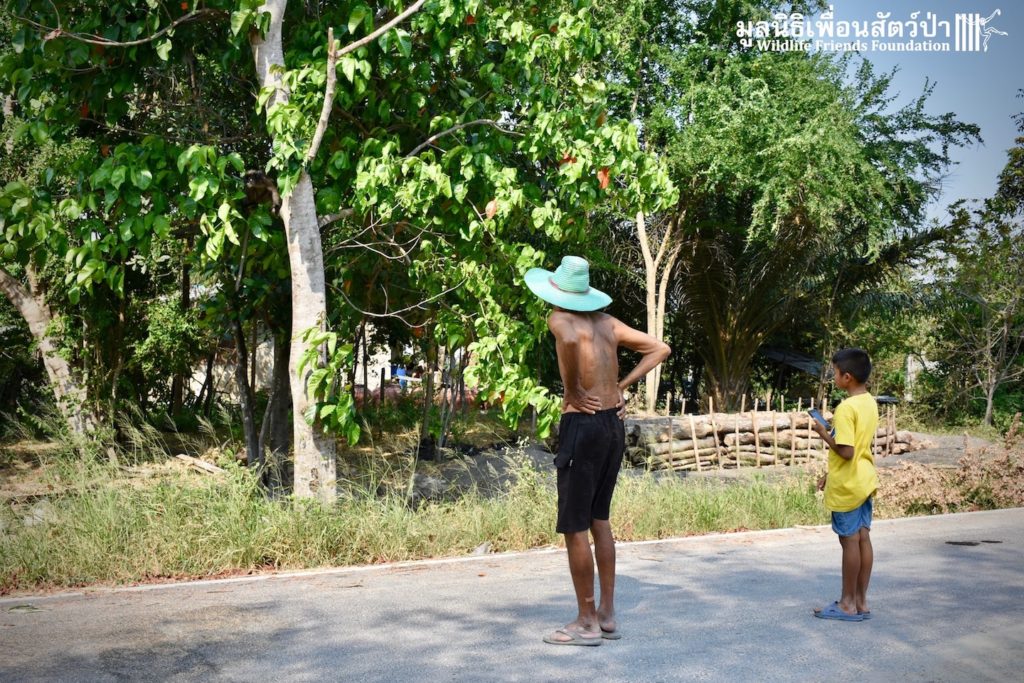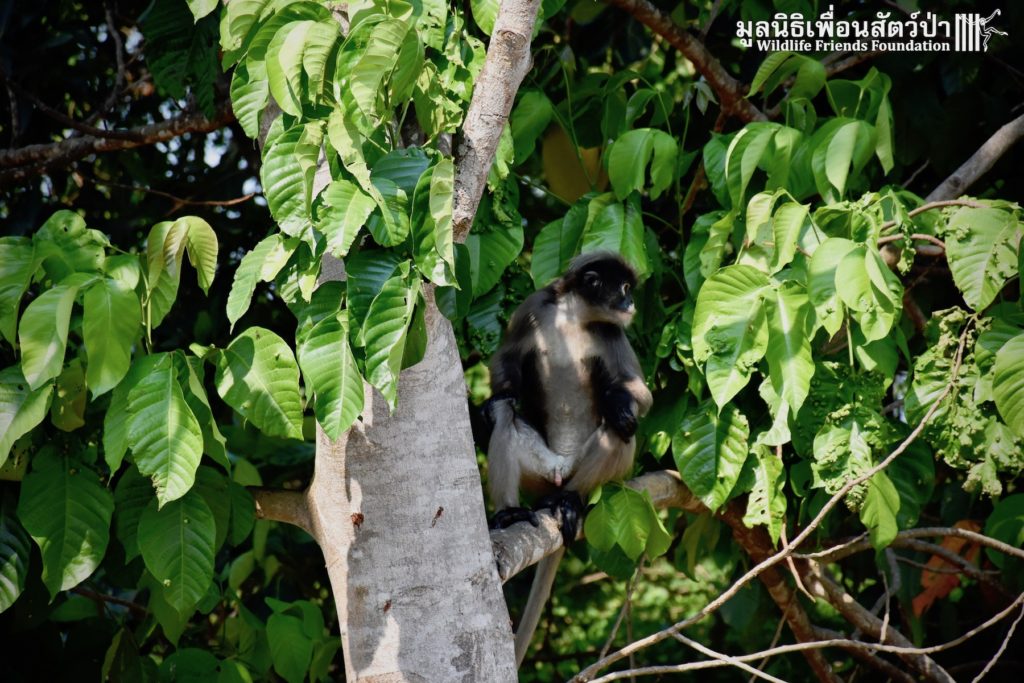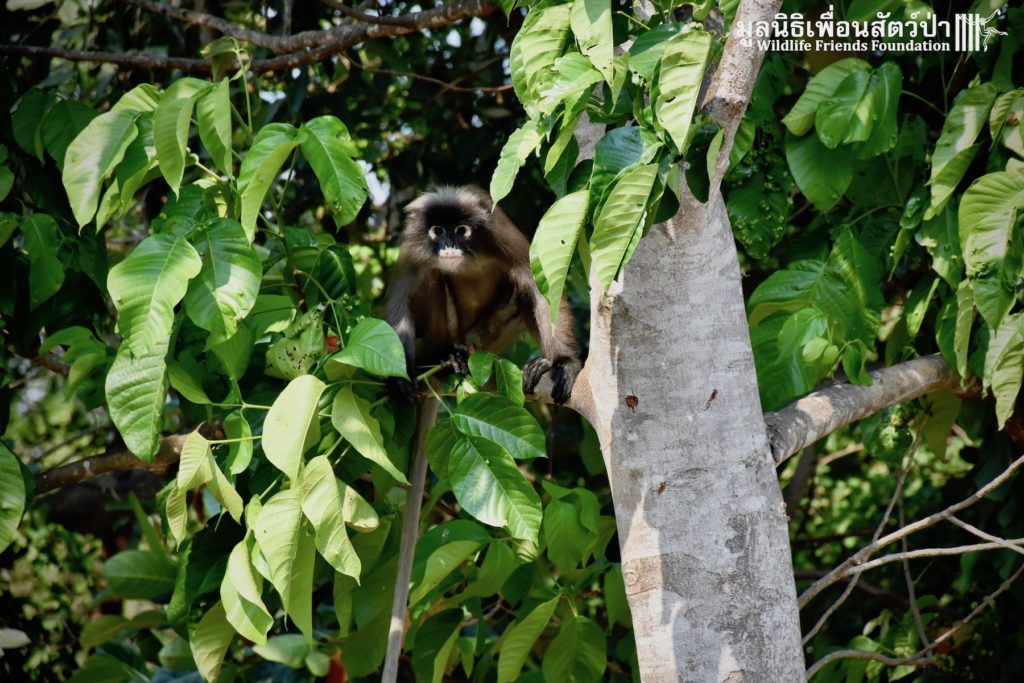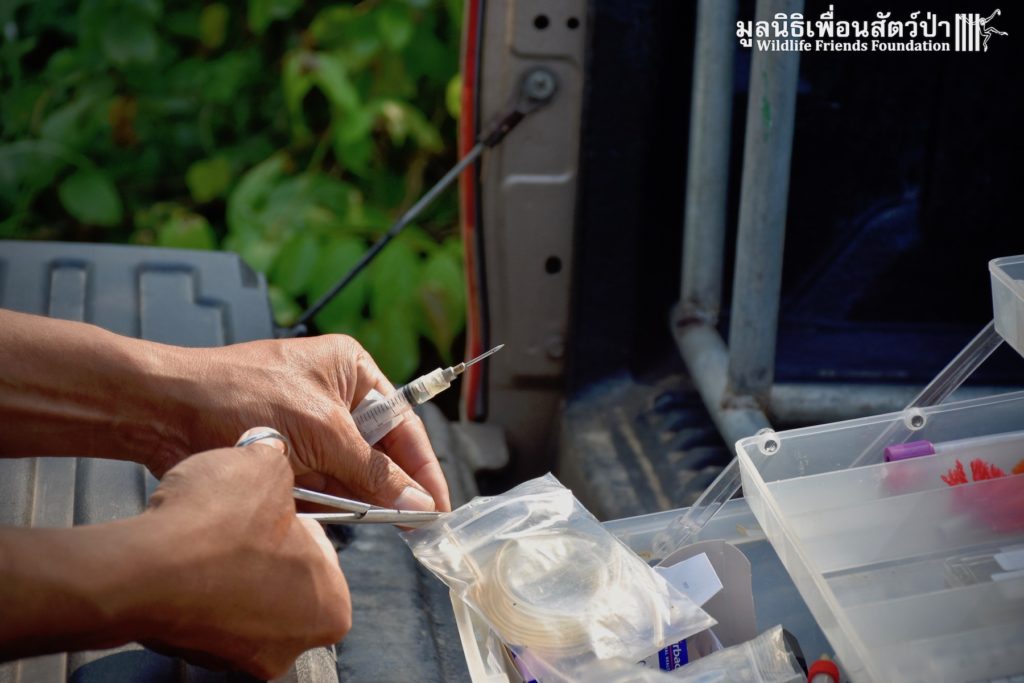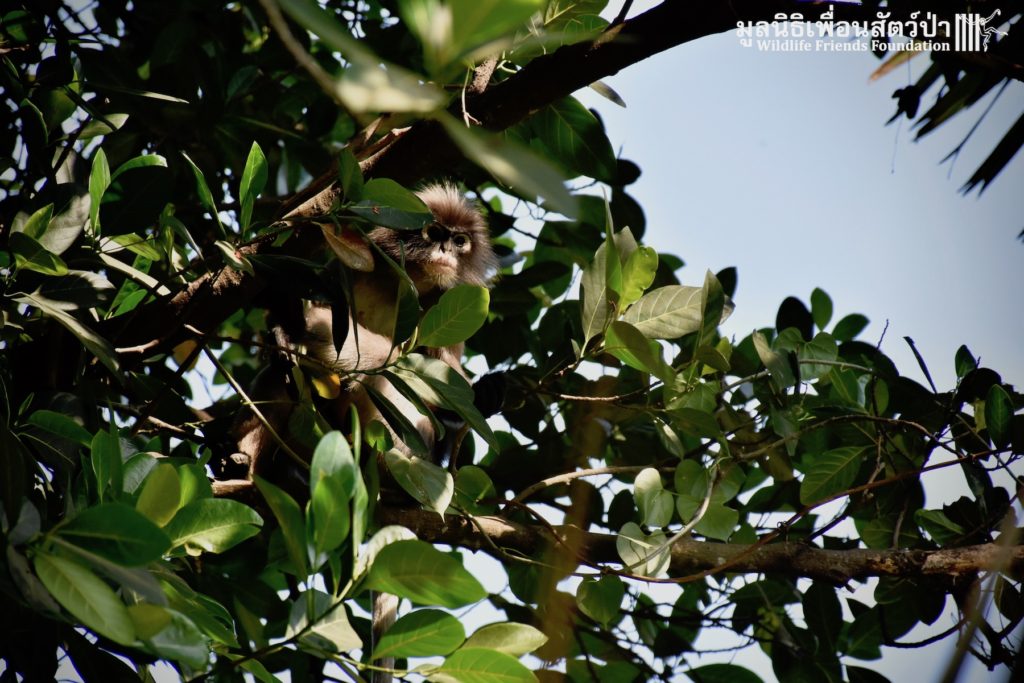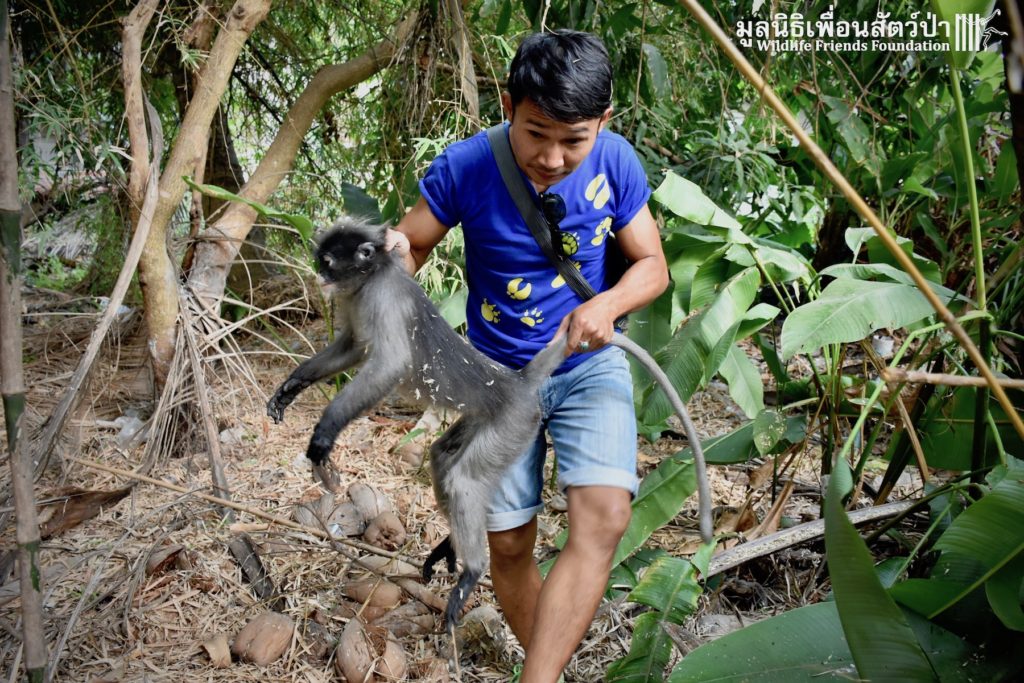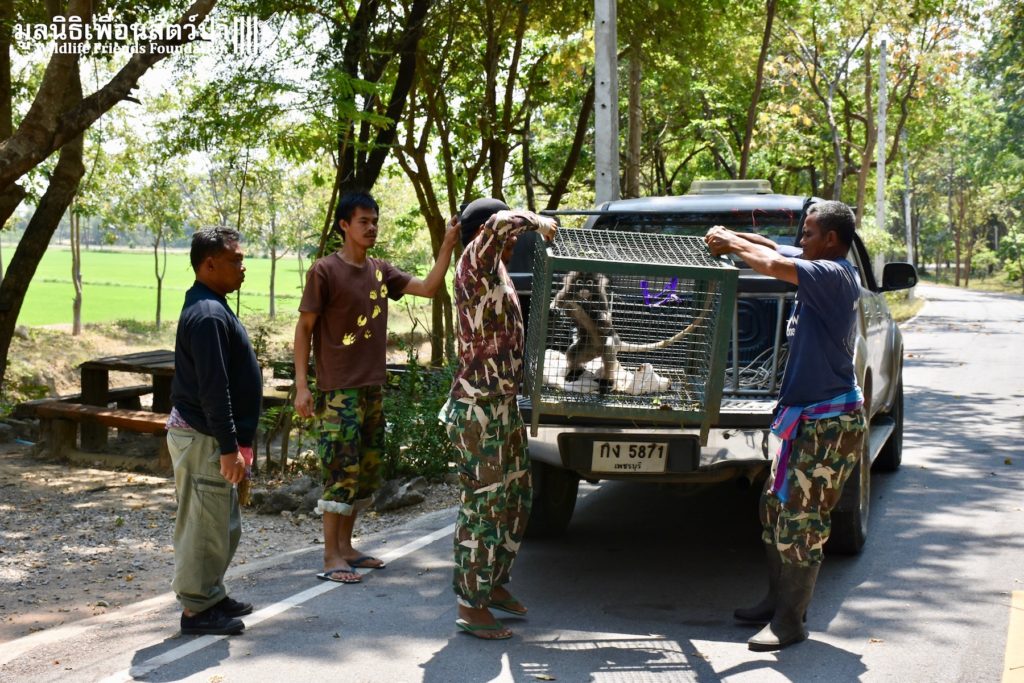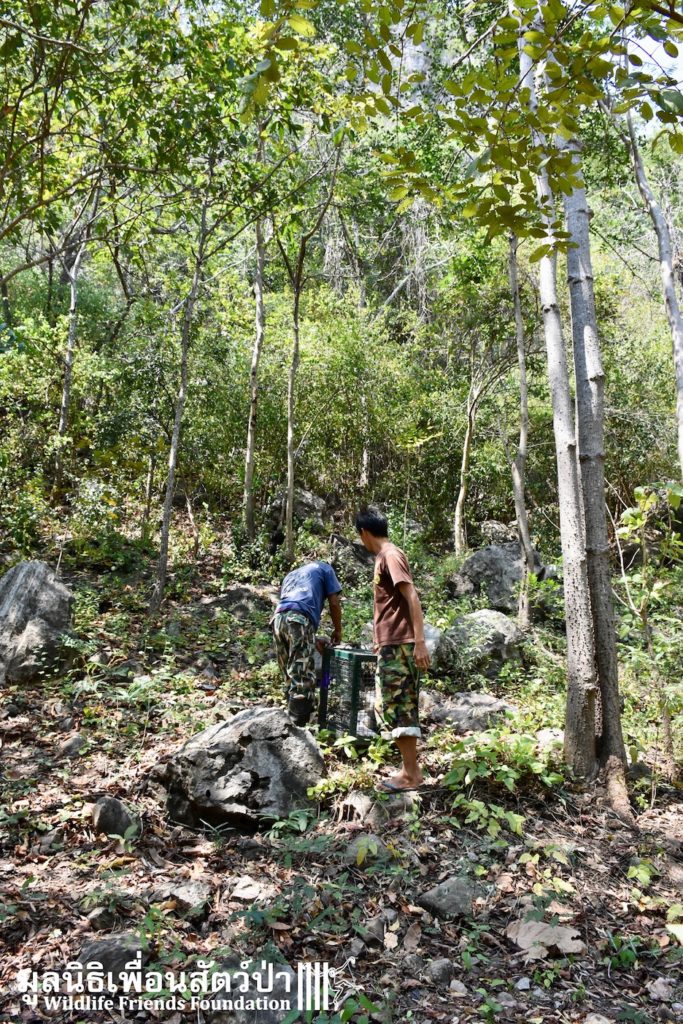Our team rescued a wild long-tailed macaque who had been struck by a car. He has severe injuries but our vets are doing everything possible
Dusky Langur – Rescued > Relocated
Two days ago we received a call from some concerned locals that had found a dusky langur (Trachypithecus obscurus) wandering around their garden close to a busy road, far away from any known habitat for this species. The WFFT Wildlife Rescue Team headed out to investigate. The langur in question is a wild adult male, the location in which he was found is 5km from the closest known habitat for this species. For his own safety the team decided we would capture this individual, check his health and take him to a protected area where he would be safe from harm. We do not know for sure why this animal was found so far away from home and some may question why capture him at all.
The IUCN Red List of Threatened Species lists the dusky langur as Near Threatened (NT). Hunting for food and the pet trade are major threats, as is habitat loss and degradation, due to expansion of agricultural practices and urbanization throughout its range. Considering the extensive habitat loss that has taken place within the range of the species, there is reason to believe that this species is in decline.This species plays a major role in the ecology of the forest, providing ecosystem services in their forest habitats. They act as seed dispersers of the plants and fruits they eat, enhancing forest regeneration and connectivity. They also have an impact on the food chain as they serve as prey for various other species of animals such as leopards.
Outside large protected areas the dusky langur can be found in a few isolated pockets of suitable habitat that are surrounded by agricultural area, this guy had ventured just a little to far from a safe home and the best thing for his survival was to relocate him to a protected forest area. This case offers a stark reminder of human wildlife conflicts and the pressures of habitat loss and degradation for many of our wild animal species. At least for this one, he now has a second chance at life in a protected mountainous forest area. We are hopeful that he will stay out of danger.

